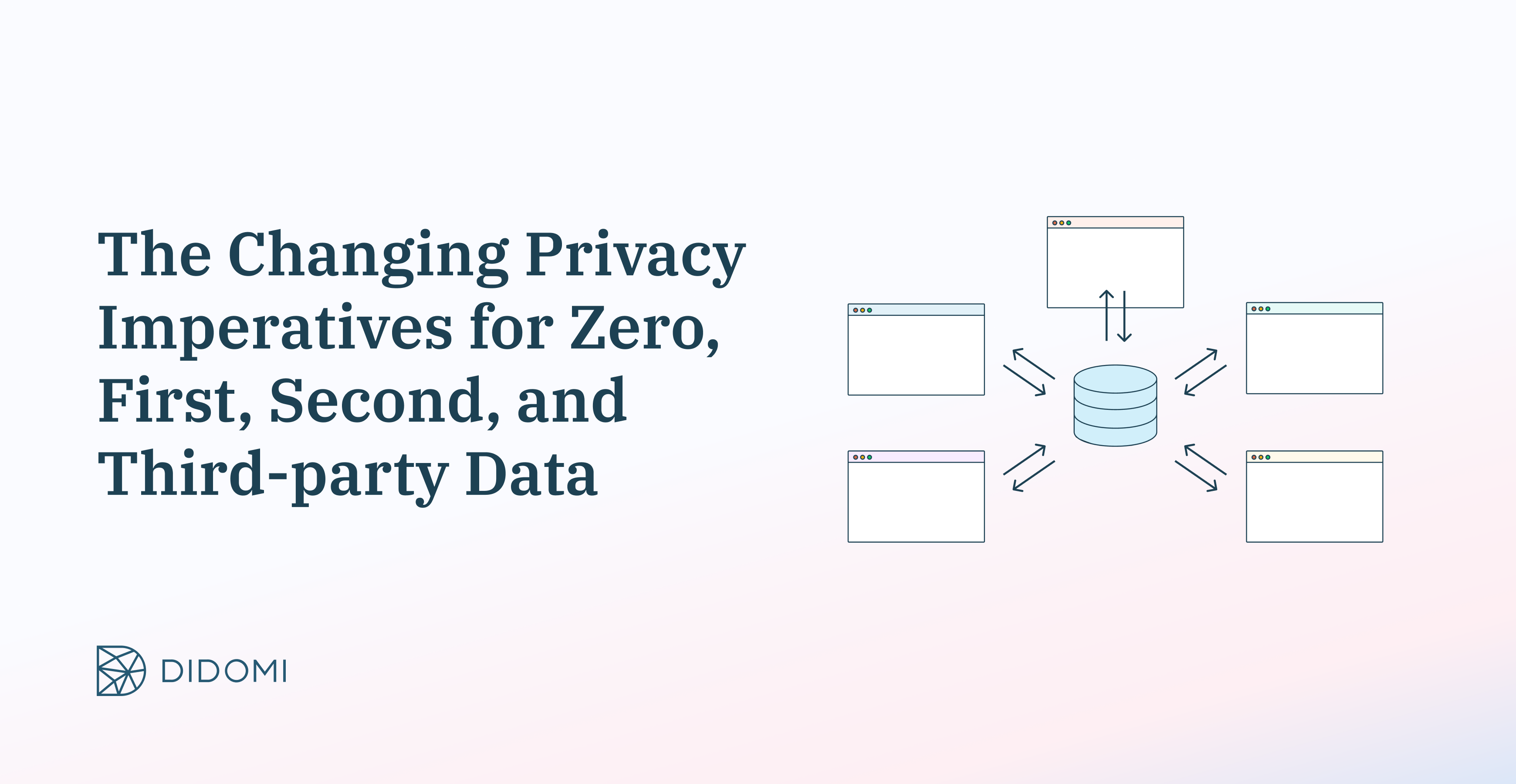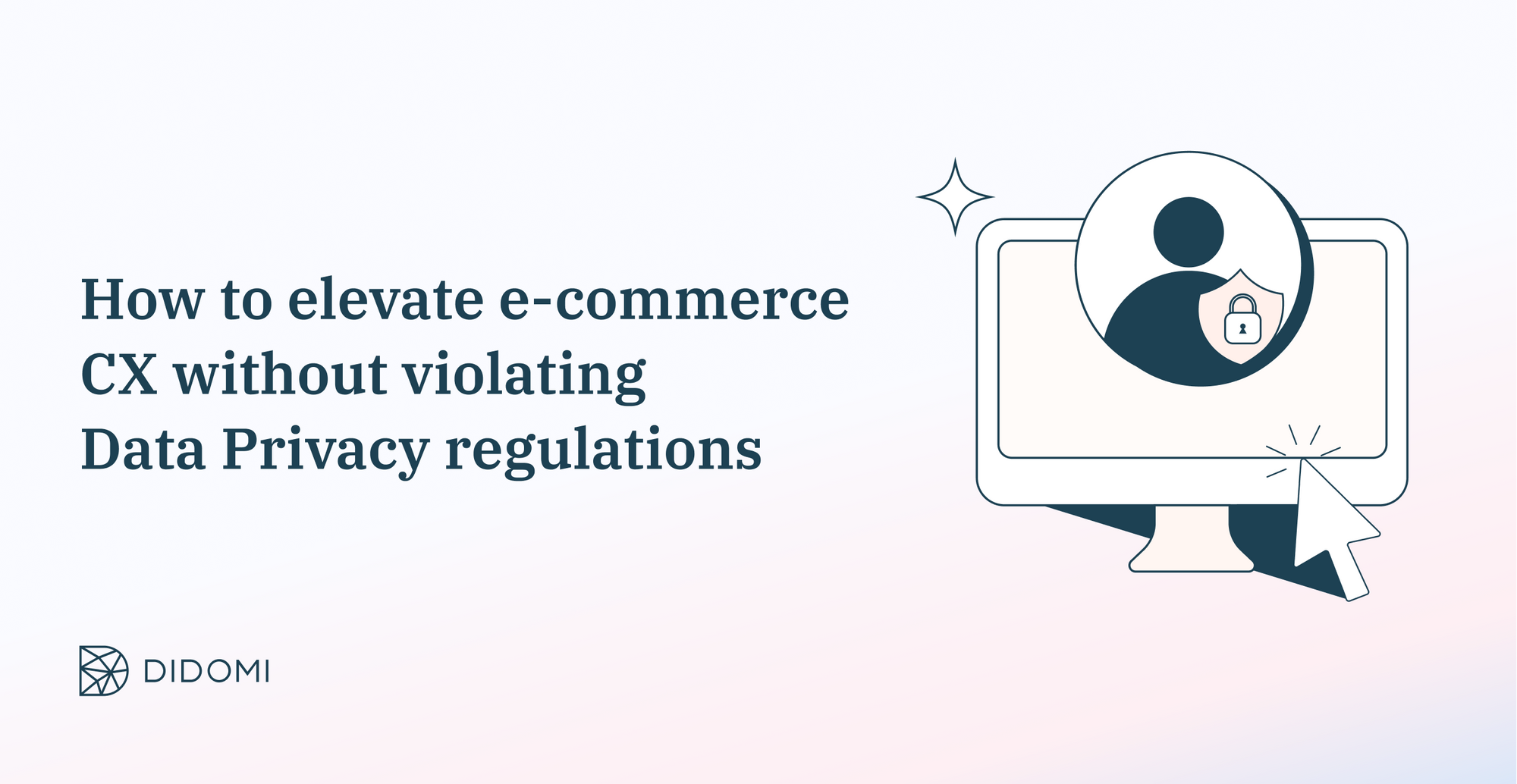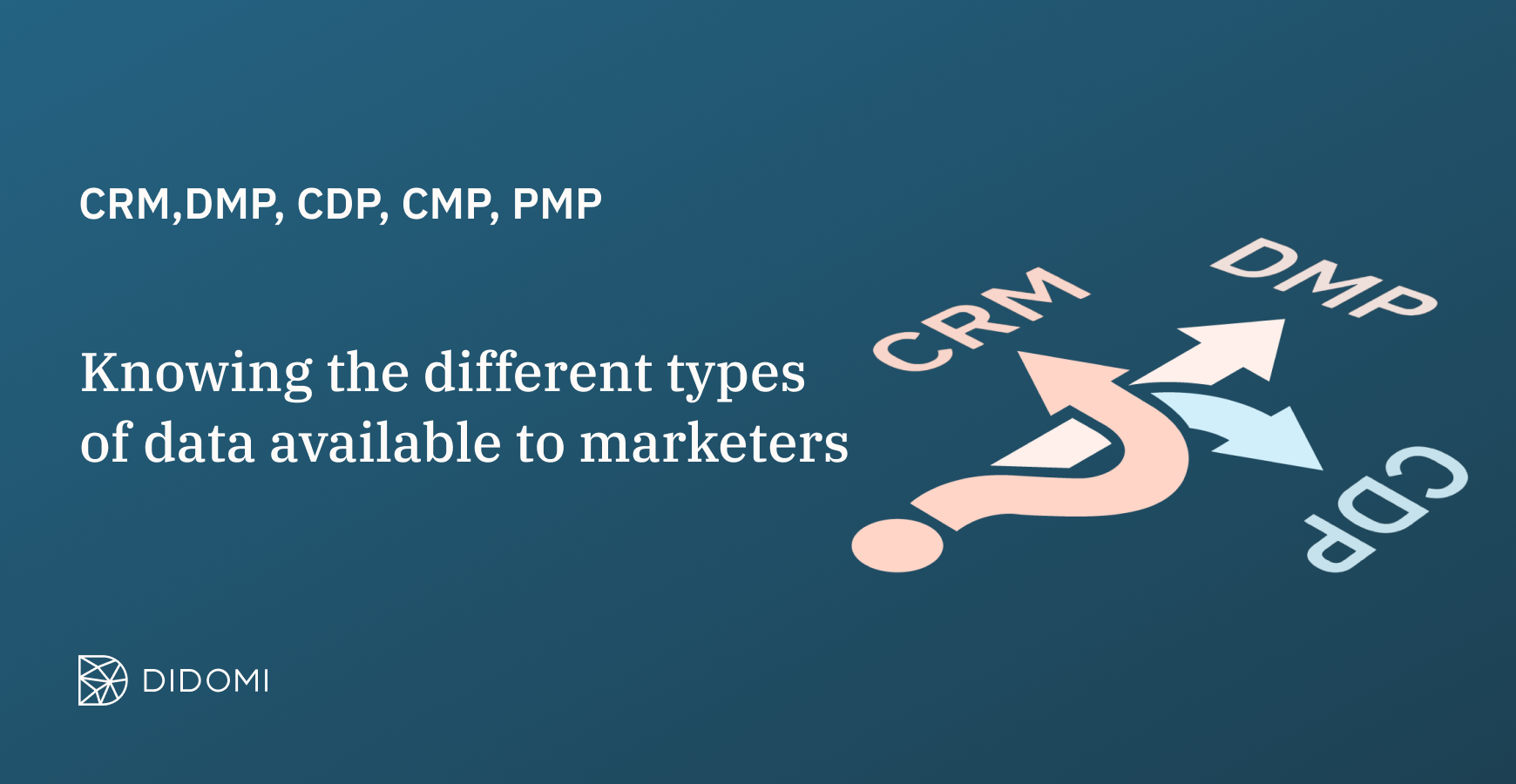The data landscape is not shrinking, it is evolving, and so are marketers. Even as third-party cookies are getting deprecated, better data marketing alternatives have already emerged or become more prominent than they may have been before.
Smart marketers are realizing the two new rules of data-driven marketing:
-
More is not necessarily better. It’s no longer about upsizing but right-sizing customer data collection, storage, and activation;
-
It’s vital to build a more diverse portfolio of data sources – including zero-, first-, second-, and third-party data - to meet different business goals more effectively.
But what are the privacy imperatives for this evolved data marketing landscape? In this article, we explore the 4 types of data a company can leverage to meet its marketing goals, and understand the data privacy context in which each operates.
Summary
-
Zero-party data: Strengths, challenges, and data privacy principles
-
First-party data: Strengths, challenges, and data privacy principles
-
Second-party data: Strengths, challenges, and data privacy principles
-
Third-party data: Strengths, challenges, and data privacy principles
Zero-party Data: Strengths, challenges, and data privacy principles
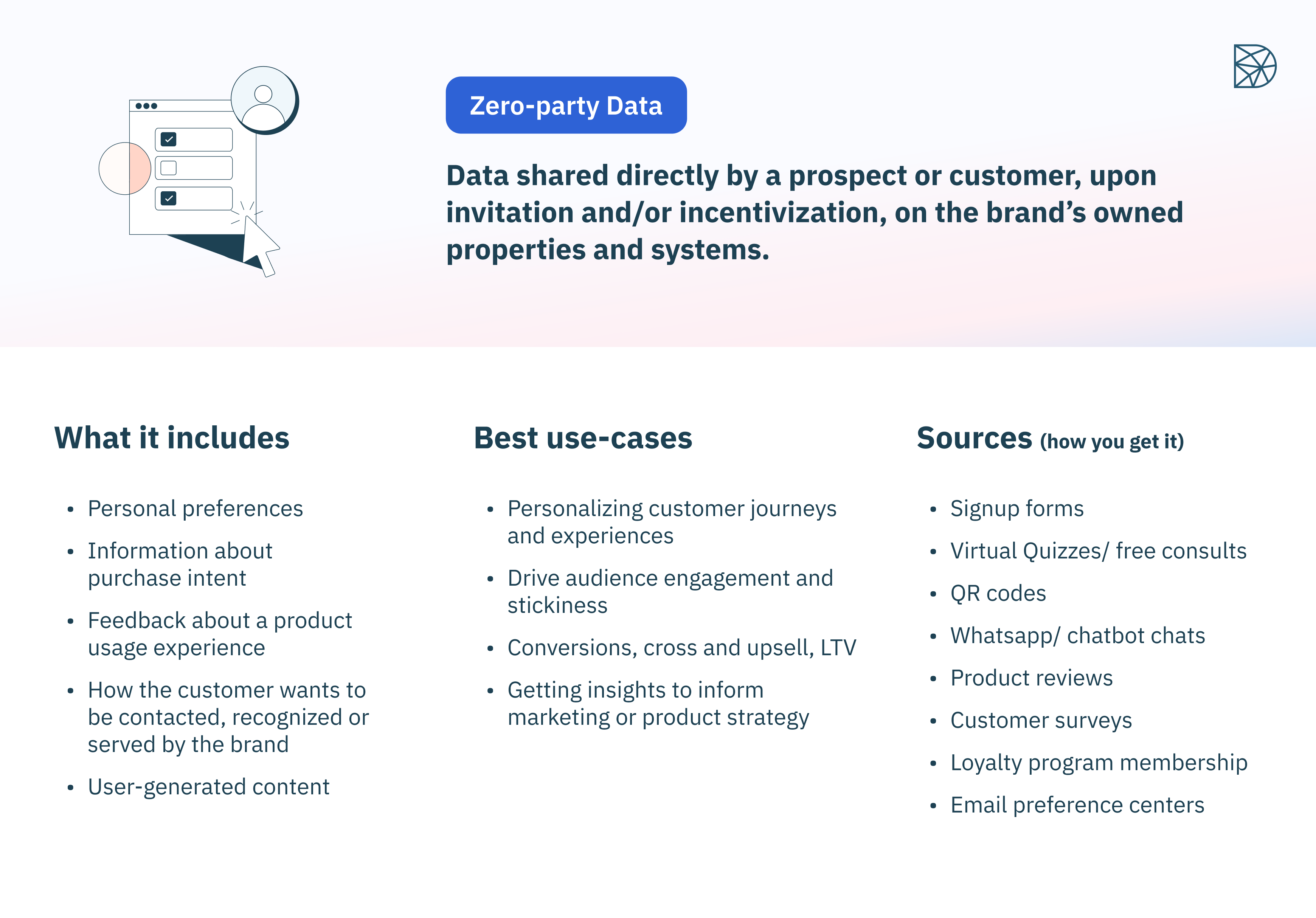
Zero-party data is based on the idea of exchanging value in a transparent setting: a customer offers a brand their data in exchange for more personalized experiences or an exclusive incentive or privilege.
Strength of zero-party data
Zero-party data is high-quality since it is volunteered by the customer and delivered directly into the brands own systems. It also offers customers a high degree of control over how their data is stored and used.
Challenges with zero-party data
A recent survey found that consumer trust ratings are still very low across industries. The right to ask for zero-party data has to be earned with consistent privacy-first behavior across the brand’s websites, mobile apps, landing pages and social media pages, which takes time and effort.
Some marketers also doubt the accuracy and quality of zero-party data, especially because customers are often incentivized to share data in exchange for a reward.
Zero-party data privacy principles
- Invest in a robust Preference Management Platform to help build credibility and institutionalize a consistent approach to collecting zero-party data across channels, devices and geographies.
- Zero-party data, even though voluntarily provided by customers, is not exempt from consumer data privacy laws and regulations. A strong consent management platform helps customers know what they are signing up for, and the brand to track each point that consent was provided
- Leverage a privacy-by-design approach to ensure that the zero-party data collected is not vulnerable to future changes in consumer data privacy regulations and laws
- Ensure a solid data subject access request (DSAR) plan so that customers feel in control of how their data is used, and have the freedom to withdraw consent at any time
|
Best practice tip: The key with zero-party data is to progress incrementally with a layered approach, and not overwhelm customers with too many asks at the start of their journey. By collecting data about preferences and intent progressively, marketers have space to ensure that each incremental layer enables the brand to deliver better, smarter personalization or experiences. |
First-party Data: Strengths, challenges, and data privacy principles

Of all the data sources, first-party data – data collected directly by the brand on its own channels and systems - is often the stand-out option for many marketers. This is because it offers the right balance of data reliability, scale, and depth. Once the brand has built a significant multi-channel digital footprint, it can stitch together data to create a comprehensive picture of the customer.
First-party data strengths
First-party data hits the sweet spot between zero- and second-party data because it is based on actual interactions that have occurred; and the brand can ensure it is accurate, reliable and recent. It enables granular targeting and personalization based on data that’s already in the system.
First-party data challenges
Collecting customer data through their journey, from a range of sources and channels, can cause duplication, over-collection, or confusion. Without the right technology to create a single view of each customer, it is difficult to run an orchestrated marketing effort based on first-party data.
First-party data privacy principles
-
While it can be tempting for brands to collect and store every single data point that can be tracked during the customer’s journey, the right approach is to be choosy about what first-party data is collected and how long it is held for
-
While brands have full control over the first-party data they collect, consent and clarity are still mandatory so data assets don’t turn into liability. Being able to prove consent for each data point in its possession is a must-have capability
-
A Consent Management Platform (CMP) coupled with Customer Data Platform (CDP) and supported by a preference center can deliver a seamless flow between consent-led data collection and insight-led activation
|
Best practice tip: First-party data comes from multiple channels and devices and needs to be unified before it can be activated for communication and personalization.
Customer data platforms (CDP) help marketers solve the problem of data collection and unification by bringing together data from multiple sources and creating a comprehensive and unified view of each customer’s unique journey. For an impactful first-party data strategy, leverage a CDP for more effective use of the data. |
Second-party Data: Strengths, challenges, and data privacy principles
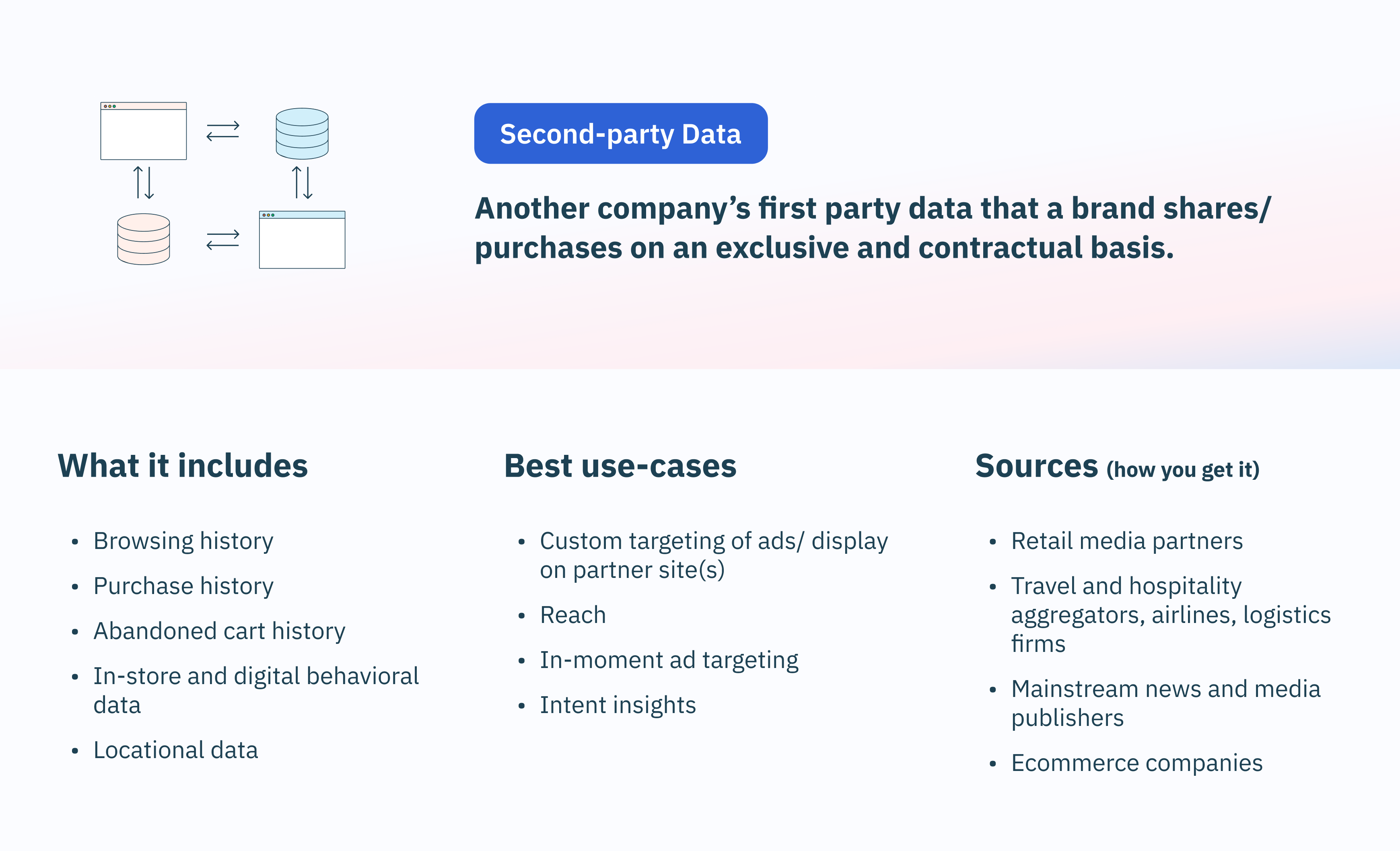
Marketers can buy, rent or share customer data and insights from companies that have access to high-volume traffic and interactions with similar audiences. Typically, publishers, e-commerce, travel and airline vendors and aggregators, and large retailers monetize their data by offering brands exclusive access to advertise or communicate with their audience.
Second-party data strengths
Second-party data is usually accurate, reliable, and collected with consent (because it is essentially the first-party data for the company that collects it). The data often offers both – depth of insight and scale, helping brands that may not have adequate traffic or audience of their own, or want to expand reach beyond their current audience.
Second-party data challenges
If the second-party data is not vetted properly, it may turn out to be irrelevant or outdated or lack adequate context. If marketers assume intent and interest, it may lead to wasteful advertising.
That said, they don’t have much control over how the data was acquired or who else may access it, leaving the brand vulnerable to compliance gaffes even though it did not acquire the data directly.
Second-party Data Privacy Principles
-
The data owners should pass all consent and compliance checks, including a clear process to handle opt-outs, before your brand uses it
-
The data agreement has to include a clear data portability process to avoid any breaches or violations during data transfers
-
Cross-border data exchanges may have a more complex set of regulations. It is best to check regulations - both where the data is collected and where it is being activated
|
Best practice tip: Clarity of purpose - what you plan to use second-party data for – is key. Is it for programmatic advertising, personalization, or to distill more insights about audiences? |
Third-party data: Strengths, challenges, and data privacy principles
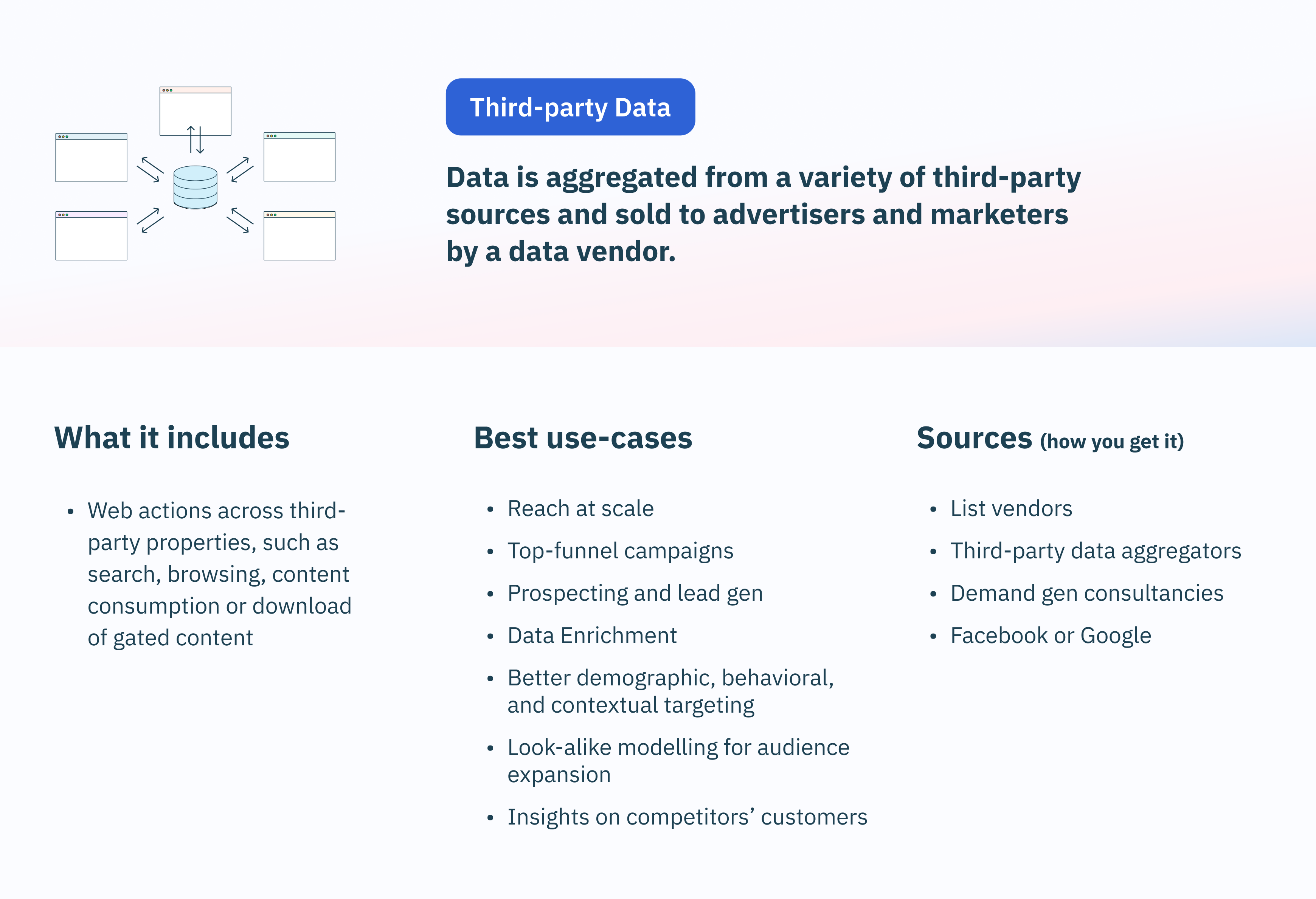
Third-party data – customer data aggregated from a variety of ‘third-party’ sources, packaged and sold to brands by data vendors - has been losing its popularity among customer-centric brands off-late. This is mainly due to developments like the consumer’s increasing privacy-protecting awareness and behaviors; deprecation of third-party cookies, fast-evolving national and state-wide privacy regulations; and marketers’ desire to build a more balanced portfolio of data sources.
But third-party data doesn’t have to be at odds with privacy. If sourced and managed responsibly, it can play a crucial role in a larger data-driven marketing strategy.
Third-party data strengths
Third-party data still wins when it comes to sheer scale and reach, and it has also proven itself beyond lead generation use-cases; at a fairly reasonable cost. Used well, it can help with audience expansion using look-alike modeling, provide more context on buyer intent, and enable enrichment of current data sets to better define audiences.
Third-party data challenges
Buyers of third-party data have little to no visibility into where the data was sourced, what methods were used for collection or storage; or how recent it is. Unlike all other data types, third-party data is available to anyone - multiple competitors could be using the same data. With third-party data, accuracy, recency, and credibility are always significant risks.
Third-party Data Privacy Principles
-
Under GDPR and other regulations around the world, clients are responsible for the actions and compliance of their vendors. Ensure vendor credentials by validating how and when the their-party data was collected, and what consent protocols were used in the process
- Keep a check on audience feedback: if communication from third-party data prospects has higher bounce or opt-out rates, you may want to re-evaluate the source, vendor, or data quality
- As consumers become more aware of their data privacy rights and choosier about who can track them online, it is important to ensure marketing dollars aren’t being wasted on ad-blockers and bots.
|
Best practice tip: The trick to making the most of third-party data is to use it well. In practice, this means not using third-party data in isolation. Instead, stitch first- and third-party data together in ways that make insights greater than the sum of the parts. |
Towards a more evolved customer data landscape
As marketers evolve to build a more diverse portfolio of data sources, they reduce dependence on any one kind of data.
A robust consent and preference management platform coupled with a CDP can help marketers manage customer data in a privacy-focused world, streamline and orchestrate data activation, and finally, deliver stand-out experiences to their customers that are both personalized and compliant.



